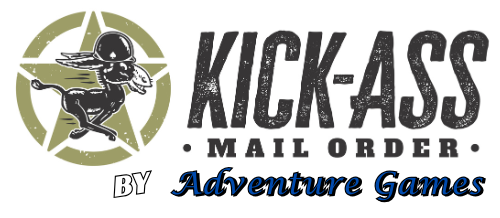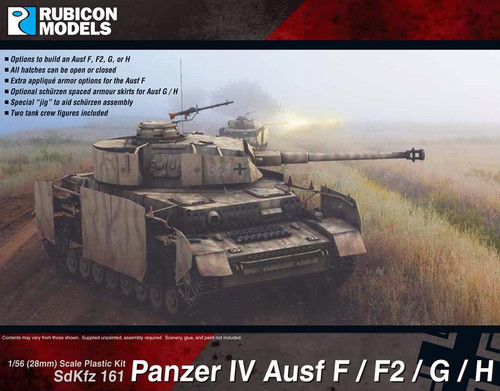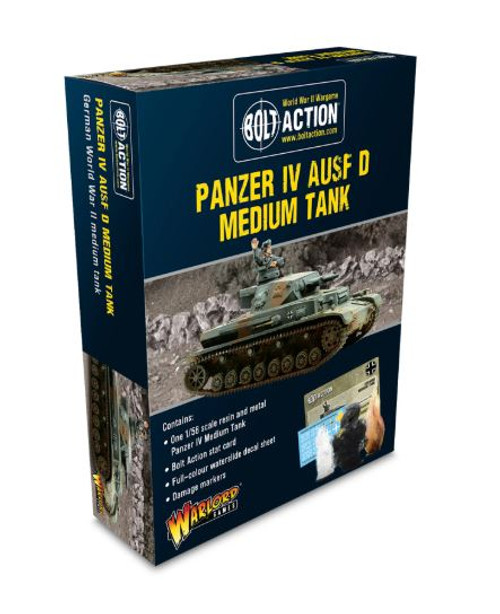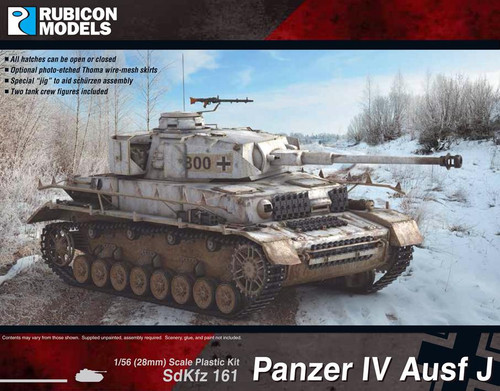Product Description
The SdKfz 161 Panzerkampfwagen IV (PzKpfw IV), commonly known as the Panzer IV, was a German medium tank developed in the late 1930s and used extensively during WW2. The Panzer IV was the most numerous German tank and the second-most numerous German armored fighting vehicle of the war, with over 8,500 built. The Panzer IV chassis was used as the base for many other fighting vehicles, including the Sturmgeschütz IV assault gun, Jagdpanzer IV tank destroyer, the Wirbelwind self-propelled anti-aircraft gun, and the Brummbär self-propelled gun.
The Panzer IV saw service in all combat theaters involving Germany and was the only German tank to remain in continuous production throughout the war. It received various upgrades and design modifications, intended to counter new threats, extending its service life. Generally, these involved increasing the Panzer IV’s armor protection or upgrading its weapons, although during the last months of the war, with Germany’s pressing need for rapid replacement of losses; design changes also included simplifications to speed up the manufacturing process.
The Panzer IV was partially succeeded by the Panther medium tank, which was introduced to counter the Soviet T-34, although the Panzer IV continued as a significant component of German armoured formations to the end of the war. A total of 8,553 Panzer IVs of all versions were built during World War Two, with only the StuG III assault-gun / tank destroyer’s 10,086 vehicle production run exceeding the Panzer IV’s total among Axis armored forces.
The Panzer IV Ausf F to H
In April 1941, production of the Panzer IV Ausf F started. It featured 50mm single-plate armor on the turret and hull, as opposed to the appliqué armor added to the Ausf E with a further increase in side armor to 30mm. With the extra weight, track width was increased from 380 to 400mm to reduce ground pressure. The wider tracks also facilitated the fitting of track shoe “ice sprags” and the rear idler wheel and front sprocket were modified. A total of 471 Ausf F (later temporarily called F1) tanks were produced from Apr 1941 to Mar 1942.
On May 26 1941, mere weeks before Operation Barbarossa, it was decided to improve the Panzer IV’s main armament to a 50mm PaK 38 L/60 gun. Within months, the shock of encountering the Soviet T-34 medium and KV-1 heavy tanks necessitated a new much more powerful tank gun. In Nov 1941 the decision to up-gun the Panzer IV to the 50mm gun was dropped, and instead upgraded to a 75mm anti-tank gun design later known as 7.5cm KwK 40 L/43. The Ausf F tanks that received the new longer KwK 40 L/43 gun were temporarily named Ausf F2. Three months after beginning production, the Ausf F2 was renamed Ausf G. During its production run from Mar 1942 to Jun 1943. The Ausf G went through further modifications. On Mar 19 1943, the first Panzer IV with Schürzen skirts on its sides and turret was exhibited. In April 1943, the KwK 40 L/43 was replaced by the longer 75mm KwK 40 L/48 gun, with a redesigned multi-baffle muzzle brake and improved recoil efficiency. A total of 1,687 Ausf G were produced.
The next version, the Ausf H, began production in Jun 1943. This was up-armoured and had a reinforced final drive. Higher gear ratios were also introduced. To prevent adhesion of magnetic anti-tank mines by the Allies, zimmerit paste was added to all the vertical surfaces of the tank’s armor. A total of 3,774 Ausf H were produced.
Product Highlights:
- Options to build an Ausf F, F2, G, or H
- All hatches can be open or closed
- Extra appliqué armor options for the Ausf F
- Optional schürzen spaced armour skirts for Ausf G / H
- Special “jig” to aid schürzen assembly
- Two tank crew figures included
Product Code: 280077
Number of Parts: 135 pieces / 5 sprues
Models are supplied unassembled and unpainted.
Product Videos
Custom Field
Product Reviews
1 Review Hide Reviews Show Reviews
-
Fantastic kit with a ton of optional parts/configurations
I'm no WWII vehicle expert but I'd say this kit is fantastic purely from an ease of assembly perspective. The quality of the molding is crisp and the number of specialized parts to make a decent approximation of all 4 variants printed on the box is impressive. I'm new to historical miniatures in general but I feel this was a great price point and complexity for the novice, and I look forward to building more Rubicon kits as I expand my collection.









